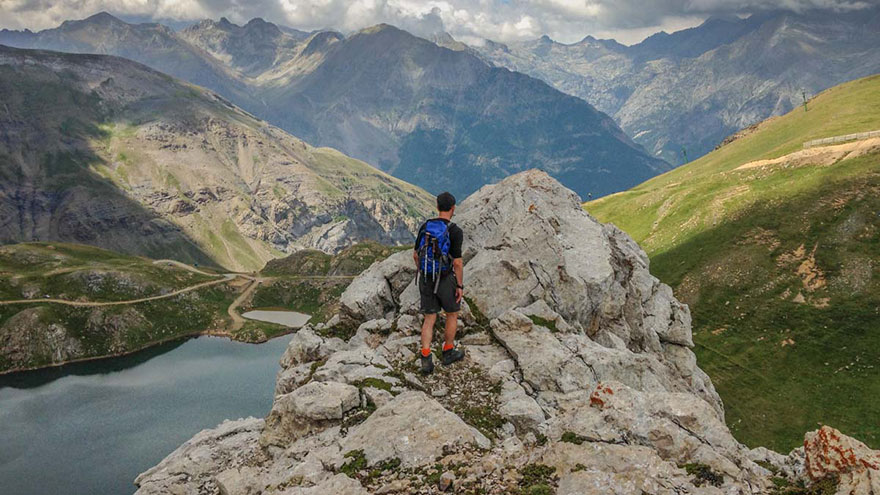Hiking the Pyrenees in France
For a diehard hiker, the French Pyrenees bring to mind one single, large-scale, classic and undeniable route: the GR10, or “Sentier des Pyrenees.” The GR10 traverses the entire country, linking the Atlantic Ocean to the Mediterranean Sea by way of the entire mountain range.
The route takes each of the mountains’ famous vistas in stride — the Lac de Gaube, the Lac d’Oo and the Cirque de Gavarnie. Even though the GR10 crosses some of France’s most forbidding, remote mountain passes, travelers need not pack a camping kit: Mountain refuges along the way provide reliable respite for sore-footed travelers.

The Route
In “GR10,” the “GR” foreshadows the experience: It stands for “Grande Randonnee,” which means “long walk” in French. The trail’s total distance is 538 miles, which takes most fit travelers between 40 and 60 days to complete, figured for a person who hikes between six and eight hours per day.
Most, however, choose to complete shorter sections of the route. Most through-hikers begin their journey at the town of Hendaye on the Atlantic Coast.
Plenty of Challenges
Hiking the Pyrenees presents a very strenuous proposition, even for very fit explorers. Most of the route sits between 6,000 and 8,000 feet above sea level, with 2,000- to 3,000-foot rolling elevation gains and losses per day and the route’s maximum altitude soaring above 9,000 feet.
The condition of the trail can be more primitive and cliff-hugging than its sterling pedigree would imply, so injuries — as well as heat stroke, dehydration and sudden storms — remain a problem, even for guided tours with on-call support vehicles.
A Short Season
Because the high-altitude pass at the trail’s central Horquette d’Arre remains impassably snow-covered until at least the middle of June, most hikers start their journey when the Horquette is declared traversable.
After the summer and early fall, the weather window closes again in October. July and August, however, bring waves of scorching heat in the lower elevations, making early September the most popular time to hike the route.
Break It Into Segments
If you don’t have months to spare for a through-hike, check out one of the GR10’s most popular mountain segments. The trail from Hendaye to Borce, for example, extends for a respectable 130 miles, with an approximate elevation gain and loss of 39,000 feet overall. The segment from Borce to Luchon is slightly longer — 136 miles, with about 50,000 feet of overall gain and loss.
The 150 miles between Luchon and Merens sends hikers up and down 56,000 feet. On the final section, from Merens to Banyuls, hikers cover slightly less distance — 115 miles — over the course of about 30,000 feet.
How to Find Your Way
The GR10 route is well-marked along its length. However, if you’re planning to complete a short section, pick up a map from the French IGN. The IGN publishes maps of the entire Pyrenees range at 1:25,000, which helps hikers effectively navigate short sections.
Alternatively, pick up a GPS device that features onboard maps, then download the Pyrenees-specific maps you need for easy access while on the trail and out-of-service.
Where to Stay
Hikers without camping gear move much faster and more efficiently than their tent-laden counterparts. Luckily, hostels, mountain refuges and primitive huts lie like cozy little pearls along the GR10 trailside. Almost 800 shelters, in fact, scatter the Pyrenees, many of them on or conveniently close to the GR10.
Most of these are more reasonably priced than you might imagine; if you’re operating on a strict shoestring, however, check the huts listed on the Lac d’Estaing. The latter are free, but do your homework — some are locked, semi-derelict or occupied by a mountaintop shepherd.
You Might Also Like :: Scariest Runways In the World

